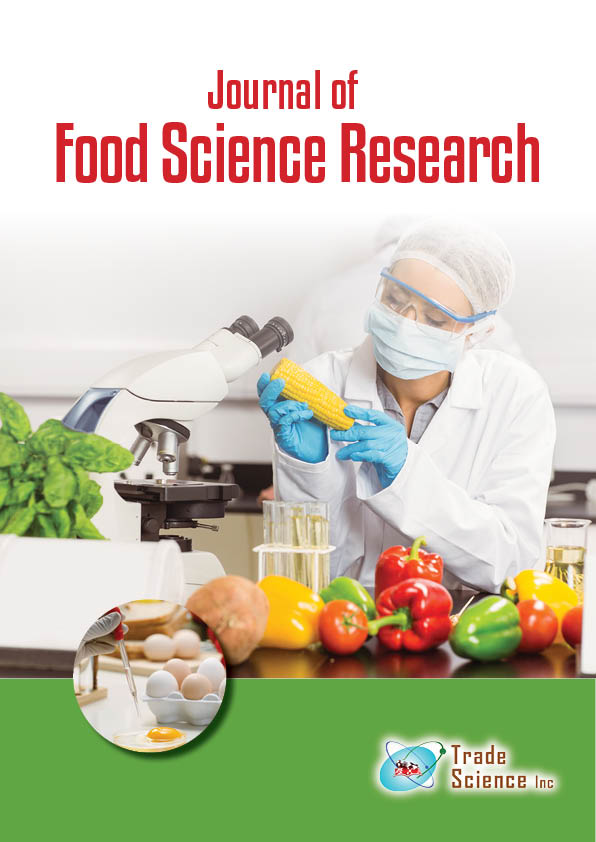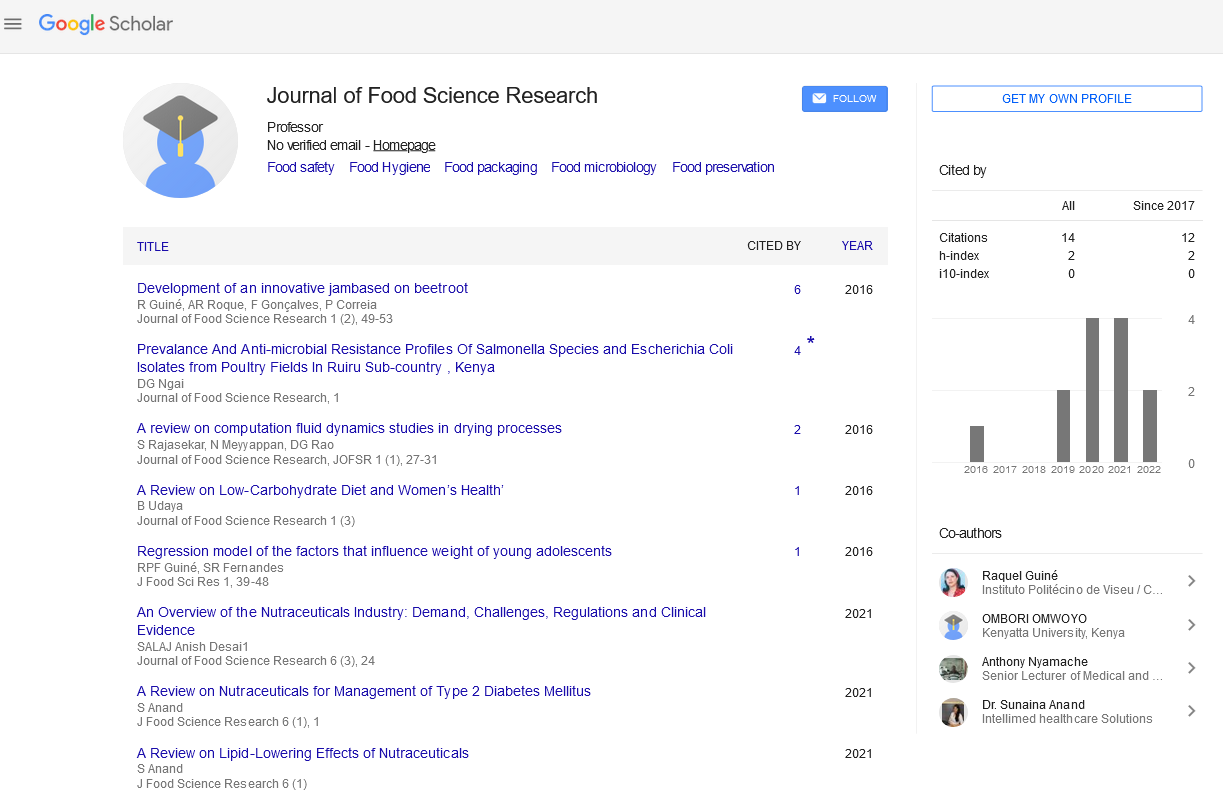Short communication
, Volume: 6( 6)
Analysis of Food Safety Issues
Food safety is a scientific method field that describes how to handle, prepare, and store food in a way that avoids foodborne illness. A food-borne disease outbreak is defined as the emergence of two or more instances of a comparable
illness caused by the eating of a common food. This contains a number of procedures that must be followed in order to
avoid
health risks. Food safety and food definitions frequently overlap in this way to protect customers. Within this line
of thought, there are two tracks: safety between industry and market, and then safety between market and consumer.
Food safety considerations include the origins of food, as well as practises relating to food labelling, food hygiene,
food additives, and pesticide residues, as well as
biotechnology and food policies and guidelines for the management
of governmental import and export inspection and certification systems for foods. When it comes to market-to-consumer operations, the common assumption is that food should be safe in the market, with the main issue being safe
distribution and preparation of the food for the consumer.
Pathogens can be transmitted through food, causing illness or death in humans and other animals. Bacteria, viruses,
mould, and fungus are the most common pathogens. Pathogens can use food as a source of growth and reproduction.
Food preparation requirements in industrialised countries are complex, whereas in less developed countries, there are
fewer standards and less enforcement of those standards. Nonetheless, foodborne infections were responsible for 5,000
deaths per year in the United States in 1999 [1].
Another major concern is the lack of appropriate safe drinking water, which is usually a crucial component in the
spread of diseases. Food poisoning is theoretically 100% avoidable. However, because to the large number of people
engaged in the supply chain, as well as the fact that diseases can be introduced into foods regardless of how many
measures are taken, this is not possible.
Issues of Food Safety
Food safety has been a major public concern around the world since low-quality foods have been linked to increased
sickness, mortality, human suffering, and economic burden. As a result, in an information-age society where consumer
awareness and safety expectations are high, food manufacturers must meet the need of modern consumers to make informed purchase decisions, as well as their preference for high-quality, low-cost food products, while also maintaining
high-quality standards and ensuring product safety [2].
In order to match end-user compliance with regulatory guidelines on food quality, the instrumentation and scientific
industries have responded with continuous improvement and development of analytical methodologies for many analytical methods. Liquid
chromatography has gained a significant role in the majority of food analysis, as evidenced by
the wide range of applications found throughout the literature [3].
The rigours of frequently complicated sample preparation, homogenization, clean up, and finally the analytical component of the test to identify a viable concentration limit chromatographic analysis. As a result of the quantity of interferences in the matrix extracts, the process frequently needs to be performed numerous times, resulting in erroneous
identification and false positives.
Furthermore, the lengthy set-up, extraction, and clean-up procedures necessary for HPLC analysis might create significant delays in contaminant identification. HPLC procedures are unsuitable for ?fresh foods,? which are often consumed in a short period of time due to limited shelf life. Multiple individuals may have been exposed to a pollutant
Corresponding Author: Castillo Thomas, Department of Soil, Plant and Food Science University of Bari Aldo
Moro Via Amendola, Italy, E-mail: thomascastillo@uniba.it
Received date: November 08, 2021; Accepted date: November 22, 2021; Published date: November 30, 2021
www.tsijournals.com
by the time it is discovered, increasing the risk of contamination. The importance of selected analysis measurement in
food is critical10. ?Younger? technologies, such as those based on an electrochemical platform, may be viable alternatives in this case [4].
Biosensors are an example of new, inventive approaches for addressing old but significant problems in a quality-conscious society, and they have evolved into formidable tools in clinical, environmental, and, particularly, food analyses11. As a result, in this review, we evaluate
biosensors used in food analysis [5]. We?ll look at the characteristics
of
biosensors that make them appealing as alternatives to existing technologies and instruments, as well as a quick
overview of recent biosensor advances and criticisms of their limits. Finally, we propose future directions and obstacles that the biosensor research community must face in order to establish itself as the new standard in food analysis
and safety.
Abstract
Food safety is a scientific method field that describes how to handle, prepare, and store food in a way that avoids foodborne illness. A food-borne disease outbreak is defined as the emergence of two or more instances of a comparable
illness caused by the eating of a common food. This contains a number of procedures that must be followed in order to
avoid
health risks. Food safety and food definitions frequently overlap in this way to protect customers. Within this line
of thought, there are two tracks: safety between industry and market, and then safety between market and consumer.
Food safety considerations include the origins of food, as well as practises relating to food labelling, food hygiene,
food additives, and pesticide residues, as well as
biotechnology and food policies and guidelines for the management
of governmental import and export inspection and certification systems for foods. When it comes to market-to-consumer operations, the common assumption is that food should be safe in the market, with the main issue being safe
distribution and preparation of the food for the consumer.
Pathogens can be transmitted through food, causing illness or death in humans and other animals. Bacteria, viruses,
mould, and fungus are the most common pathogens. Pathogens can use food as a source of growth and reproduction.
Food preparation requirements in industrialised countries are complex, whereas in less developed countries, there are
fewer standards and less enforcement of those standards. Nonetheless, foodborne infections were responsible for 5,000
deaths per year in the United States in 1999 [1].

